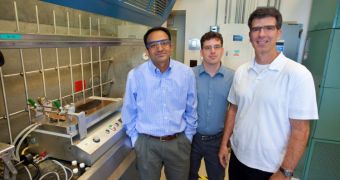For many years, researchers at the US Department of Energy's (DOE) Lawrence Berkeley National Laboratory (Berkeley Lab) have been renowned around the country for their involvement in battery studies,. Physicists here have studied everything from advanced power storage devices to fuel cells, and this made them the obvious choice for the DOE, when the Department had to award $1.6 million in American Recovery and Reinvestment Act (ARRA 2009) money for the developing of novel power storage devices for the electrical grid.
These instruments would play a pivotal role in ensuring that increasing amounts of renewable energy make their way into the grid. Generally, energy derived from winds, sunlight, biomass and the heat of the Earth is called a “variable load” in a grid, because it is not produced constantly. For instance, wind tends to blow harder at the start and end of a day, whereas the Sun shines at its brightest at midday and in the afternoon. This means that the electricity produced from these methods needs to be dispensed right when it's manufactured.
This is now very economic, as oftentimes the hours when the grid experiences its maximum load do not correspond with the times when the most energy is produced. It is therefore the job of the DOE, through its Advanced Research Projects Agency-Energy (ARPA-E), to promote the development of grid-scale batteries that could store power from alternative sources, releasing it only when necessary. The Berkeley Lab crew will from now on be in charge of making this a reality. This month alone, ARPA-E announced that it will invest $92 million for “43 cutting-edge research projects that aim to dramatically improve how the US uses and produces energy.”
The Berkeley Lab team believes that the solution to the power grid battery lies within developing and building a flow battery that uses hydrogen-bromine chemistry. “At the end of the project, we expect to have a high power, high efficiency, long life, low cost, safe storage device,” explains the lead investigator on the new project, Venkat Srinivasan. He is also a research scientist at the lab. The expert adds that the Berkeley crew is already looking into collaborating with companies such as DuPont and 3M in order to produce the chemicals and catalysts they need for their innovations.

 14 DAY TRIAL //
14 DAY TRIAL //